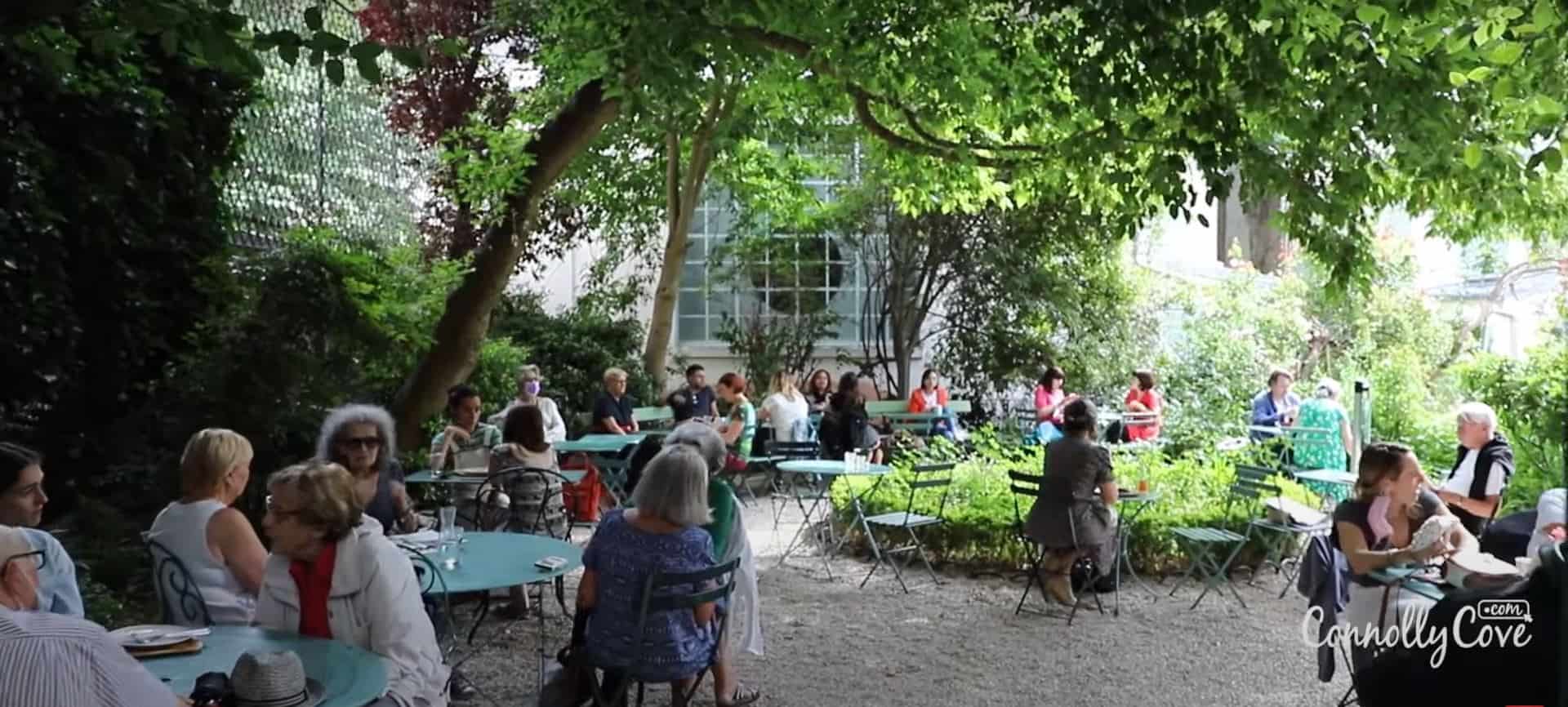Musée de la Vie romantique | Paris, France

Updated On: April 20, 2024 by Ahmed Samir
Paris, often called the “City of Love,” has long been associated with romance and art. In the heart of this enchanting city lies a hidden gem, the Musée de la Vie Romantique (Museum of Romantic Life), which encapsulates the essence of the Romantic era and offers visitors a unique and intimate experience. Located in the 9th arrondissement, this museum is a haven for art enthusiasts, history buffs, and lovers of all things romantic. In this article, we will take you on a journey through the history, art, and atmosphere of the Musée de la Vie Romantique in Paris, France.
Exploring the Romantic Era through Musée de la Vie Romantique
The Romantic era, from the late 18th to the mid-19th century, was characterized by a celebration of individualism, emotional expression, and a fascination with nature and the sublime. This period gave rise to some of history’s most renowned artists, writers, and thinkers, and Paris played a central role in shaping the Romantic movement. Musée de la Vie Romantique beautifully captures this historical moment and allows visitors to step back in time to experience the spirit of Romanticism firsthand.
History of the Museum
The Musée de la Vie Romantique is housed in a charming 19th-century mansion belonging to Dutch-born Romantic painter Ary Scheffer. Scheffer was a prominent figure in the art world during his time and was known for his portraits of famous individuals of the Romantic era, such as George Sand and Franz Liszt. His salon, located in this very mansion, was a gathering place for artists, writers, and intellectuals of the time. Today, the museum is a tribute to the Romantic period and the legacy of Ary Scheffer.
Exploring the Museum
As you enter the Musée de la Vie Romantique, you are transported into a world where time seems to have stood still. The museum is divided into several rooms, each meticulously curated to reflect the essence of the Romantic era.
- Ary Scheffer’s Studio: The heart of the museum is Ary Scheffer’s studio, where the artist worked and hosted gatherings of the Romantic elite. The studio is filled with Scheffer’s works, including portraits and landscapes that capture the era’s spirit. It’s as though Scheffer himself has just stepped out, leaving his art behind to tell his story.
- George Sand’s Apartment: The museum also pays homage to George Sand, one of the most prominent French writers of the Romantic era. A separate section is dedicated to Sand’s apartment, which showcases her personal belongings, manuscripts, and letters. Visitors can gain insight into the life and work of this influential writer.
- The Gardens: Stepping outside, you’ll find a charming courtyard and garden. This peaceful oasis in the heart of Paris offers a serene escape from the bustling city. It’s the perfect spot to sit and contemplate the beauty of the Romantic era.
- Temporary Exhibitions: Besides its permanent collection, the museum hosts temporary exhibitions that delve deeper into the themes and artists of the Romantic period. These exhibitions provide fresh perspectives and insights into this captivating era.
Art and Artefacts
The Musée de la Vie Romantique boasts an impressive collection of art and artefacts that bring the Romantic era to life. Visitors can admire works by Ary Scheffer and his contemporaries, including François-René de Chateaubriand, Eugène Delacroix, and Chopin. The collection includes portraits, landscapes, sculptures, and decorative arts, comprehensively viewing the period’s artistic diversity.
One notable piece in the collection is Ary Scheffer’s iconic painting “La Sieste” (The Siesta), which portrays George Sand and her daughter Solange. This intimate and tender portrayal captures the essence of the mother-daughter relationship, a theme that resonates with the Romantic emphasis on emotions and personal experiences.
Apart from the artwork, the museum also features a remarkable collection of personal items and memorabilia from George Sand. Her writing desk, pens, inkwells, and clothing provide a tangible connection to this great woman and her contributions to literature and social change during the Romantic era.
The Atmosphere of Romance
What sets the Musée de la Vie Romantique apart from many other museums is the intimate and evocative atmosphere it creates. As you wander through the museum’s rooms and gardens, you can’t help but feel transported to a time when Paris was a hub of creativity and passion. The dimly lit spaces, the period-appropriate furnishings, and the hushed whispers of fellow visitors all contribute to the feeling of stepping into a Romantic novel.
The museum’s setting is perfect for quiet contemplation, whether you’re an art enthusiast, a history buff, or simply someone looking for a serene escape amid a bustling city. The combination of art, history, and ambience makes the Musée de la Vie Romantique a must-visit destination for anyone seeking to experience the romantic side of Paris.
Visiting Practicalities
Here are some practical details for planning your visit to the Musée de la Vie Romantique:
- Location: The museum is located at 16 Rue Chaptal in the 9th arrondissement of Paris. It is easily accessible by public transportation, including the metro.
- Opening Hours: The museum is typically open from Tuesday to Sunday, with varying hours. Check the official website for the most up-to-date opening hours and particular exhibition information.
- Admission: Admission fees are reasonable, with reduced rates for students and free access for those under 26 from the European Union.
- Guided Tours: The museum offers guided tours, which can provide valuable insights into the collection and the history of the Romantic era.
Exploring the Charms of the 9th Arrondissement: Attractions Near Musée de la Vie Romantique
The Musée de la Vie Romantique is nestled in the 9th arrondissement of Paris, a vibrant neighbourhood with plenty of attractions and activities nearby. Here are some of the notable attractions and places to explore in the vicinity of the museum:
- Pigalle: Just a short walk from the museum, you’ll find Pigalle, a lively and historically famous district known for its nightlife, lounges, and theatres. The iconic Moulin Rouge is located here, and it’s a great place to experience the bohemian spirit of Montmartre.
- Montmartre: The Musée de la Vie Romantique is close to Montmartre, one of Paris’s most famous neighbourhoods. You can climb the picturesque streets to reach the Sacré-Cœur Basilica, offering panoramic city views. Explore the charming Place du Tertre, where artists display their work, or visit the former studios of famous artists like Pablo Picasso.
- Opéra Garnier: If you are interested in opera and ballet, Opéra Garnier is a short distance away. The opulent architecture of this 19th-century opera house is a sight to behold, and it offers guided tours if you’re not catching a performance.
- Museum of Gustave Moreau: Another hidden gem in the area is the Musée Gustave Moreau, dedicated to the works of the Symbolist painter Gustave Moreau. This museum houses an extensive art collection in the artist’s former residence and studio.
- Musée de la Franc-Maçonnerie: Located in a beautiful 18th-century mansion, this museum provides insight into the history and symbolism of Freemasonry. It’s a unique and intriguing destination for those interested in secret societies and history.
- Palais Royal: Just a short distance south of the museum, you’ll find the Palais Royal, a stunning palace with picturesque gardens, a sculpture-filled courtyard, and the famous Colonnes de Buren, a contemporary art installation. It’s a peaceful oasis amidst the hustle and bustle of the city.
- Galerie Vivienne: Stroll through the Galerie Vivienne, one of the city’s historic covered passages, for a dose of Parisian charm. It’s lined with elegant boutiques, cafes, and bookshops, making it an ideal place for shopping and people-watching.
- Grands Boulevards: The museum is situated in the Grands Boulevards area, known for its vibrant atmosphere, theatres, and shopping. Explore the bustling streets, visit department stores like Galeries Lafayette, or catch a show at one of the nearby theatres.
- Musée de la Parfumerie Fragonard: If you’re interested in the art of perfumery, visit the Musée de la Parfumerie Fragonard, located in a lovely townhouse near the museum. It offers a fascinating journey through the history of fragrance.
- Dining and Cafés: The 9th arrondissement is home to numerous delightful cafés and restaurants where you can enjoy a meal or a coffee break. It’s an excellent opportunity to savour French cuisine and soak up the local atmosphere.
Exploring the Musée de la Vie Romantique and its surroundings provides an excellent opportunity to immerse yourself in the art, history, and culture of both the Romantic era and contemporary Paris. With these nearby attractions, you can make the most of your visit to this charming neighbourhood.
Conclusion
The Musée de la Vie Romantique in Paris, France, offers a captivating journey into the Romantic era when art, literature, and emotions flourished in the City of Love. Housed in the former residence of Ary Scheffer and George Sand, the museum provides an intimate glimpse into the lives and works of the Romantic elite. With its evocative atmosphere, exquisite art collection, and serene gardens, it is a hidden treasure that promises to transport visitors to a world of passion, creativity, and romance. For those seeking a unique and enchanting experience in Paris, visiting the Musée de la Vie Romantique is a must.






